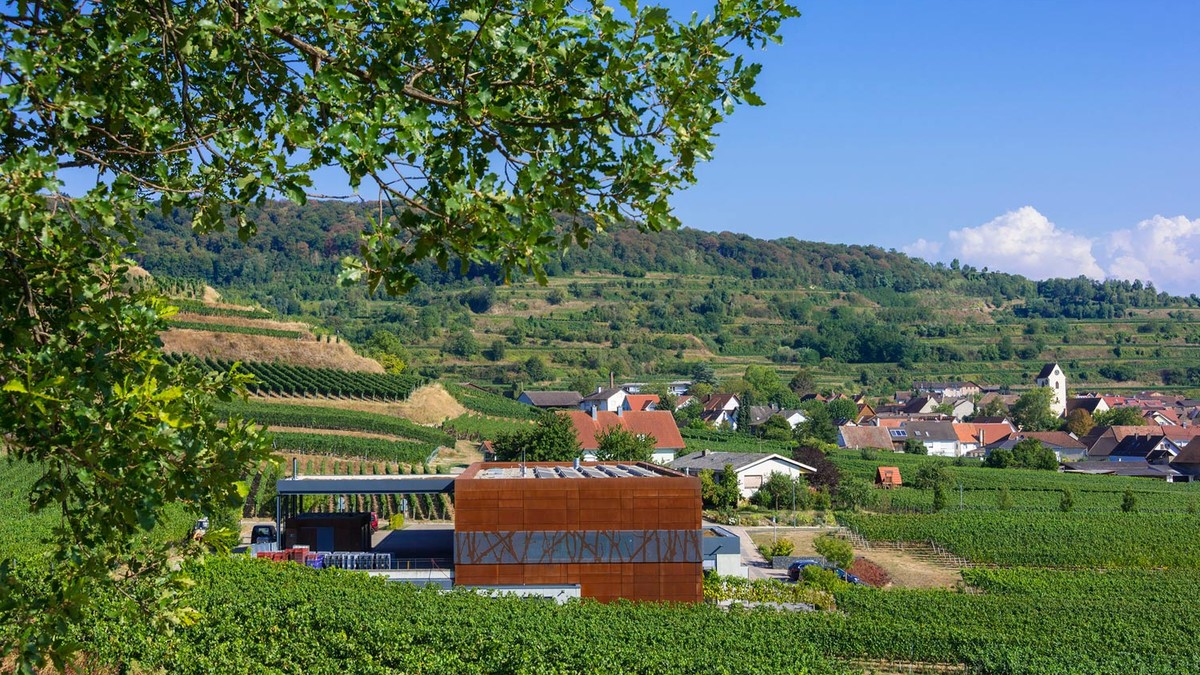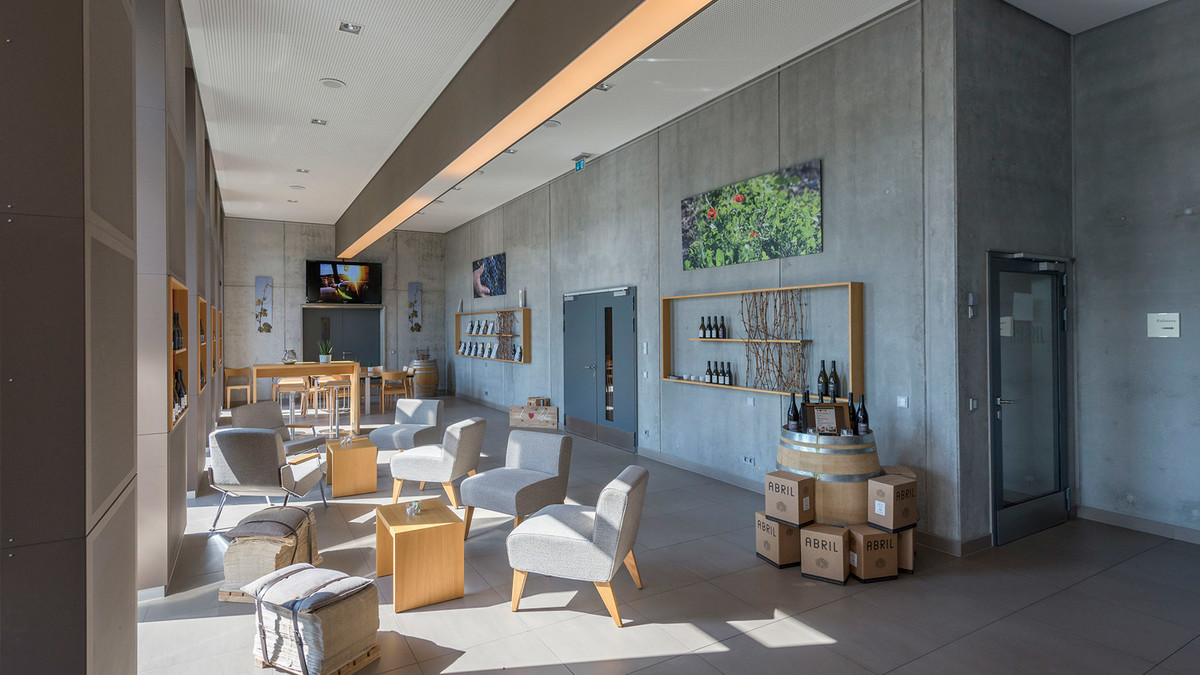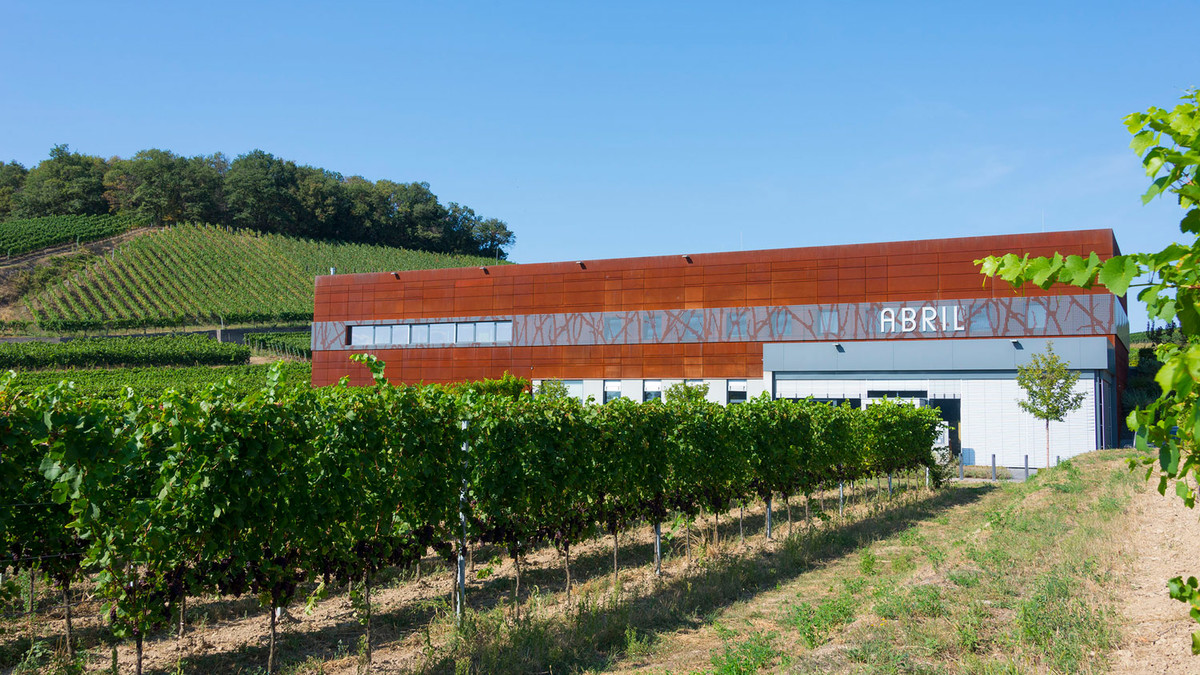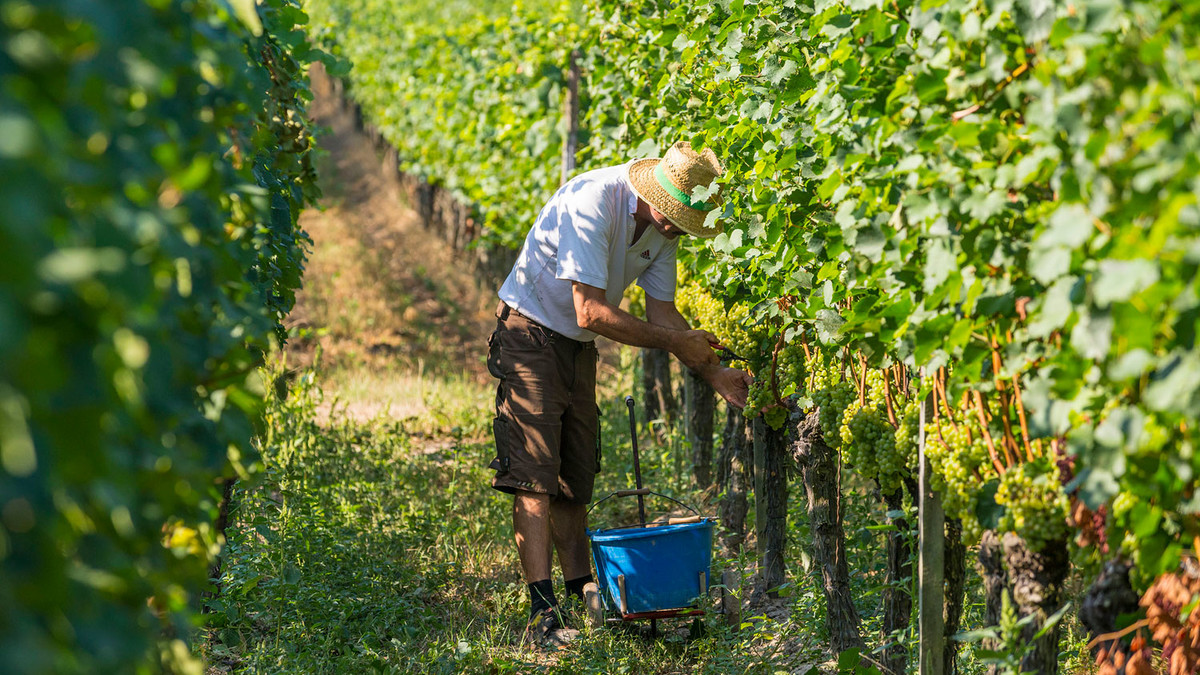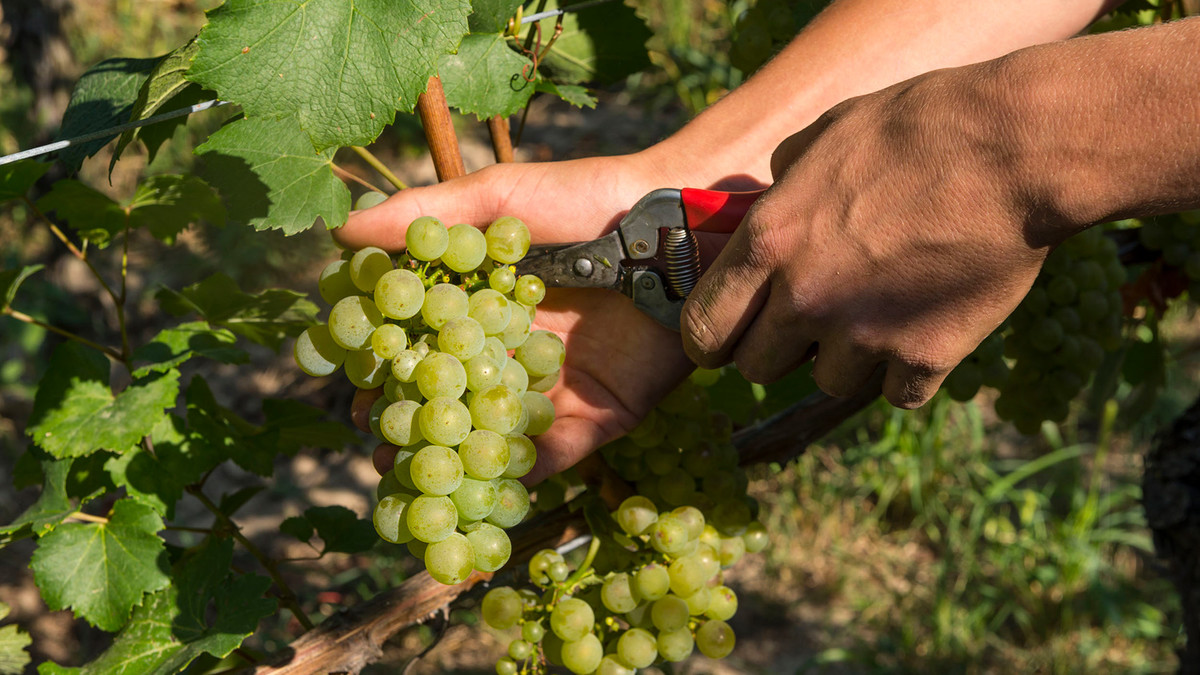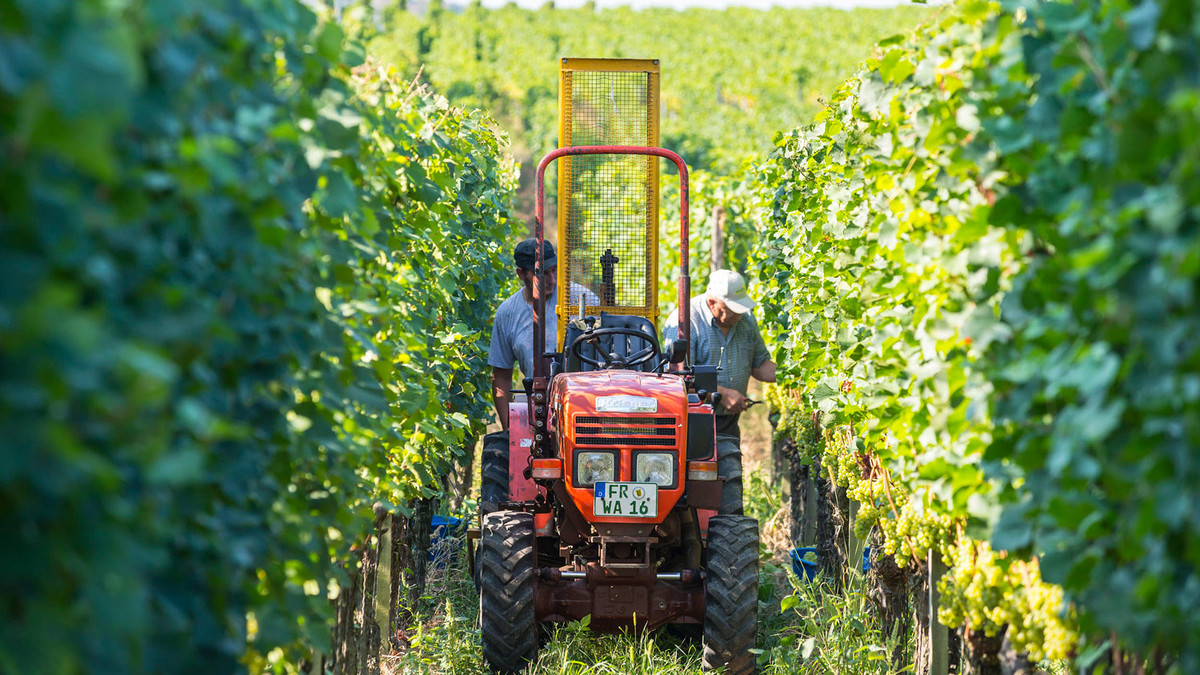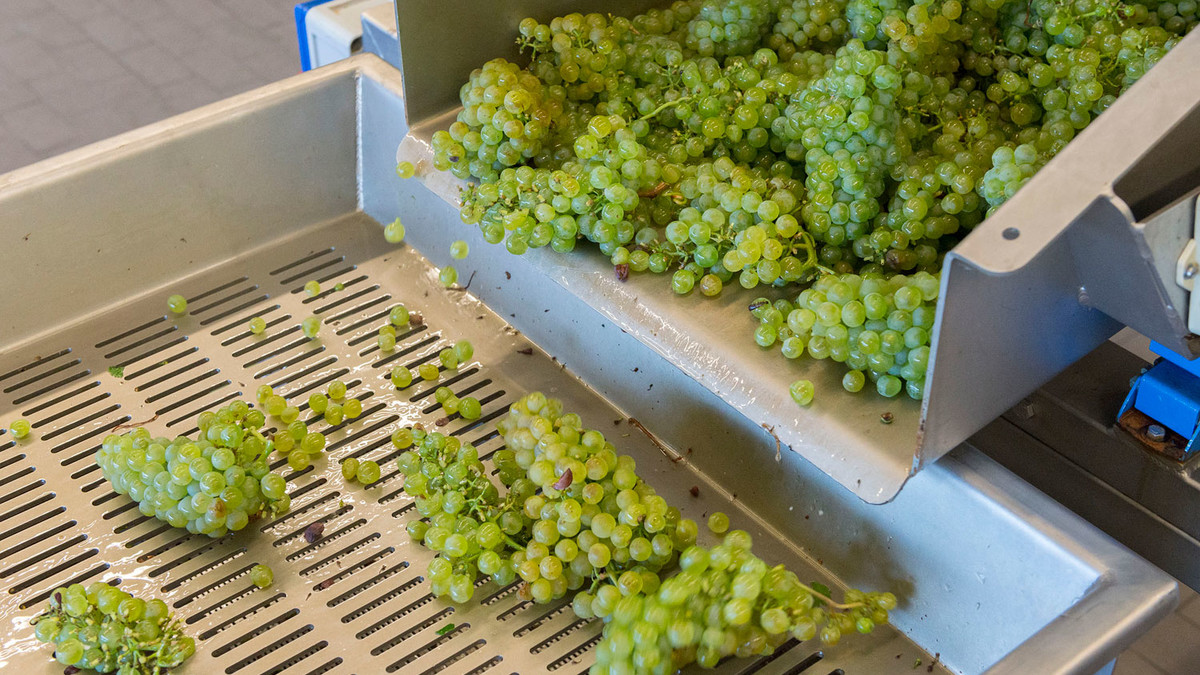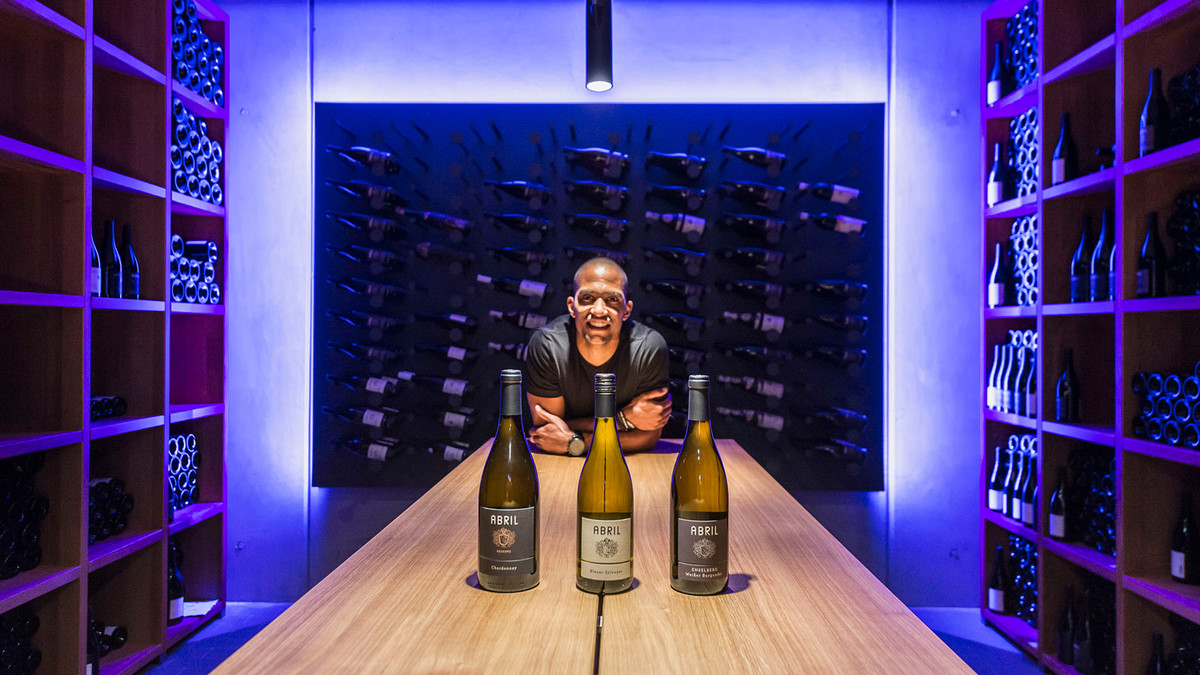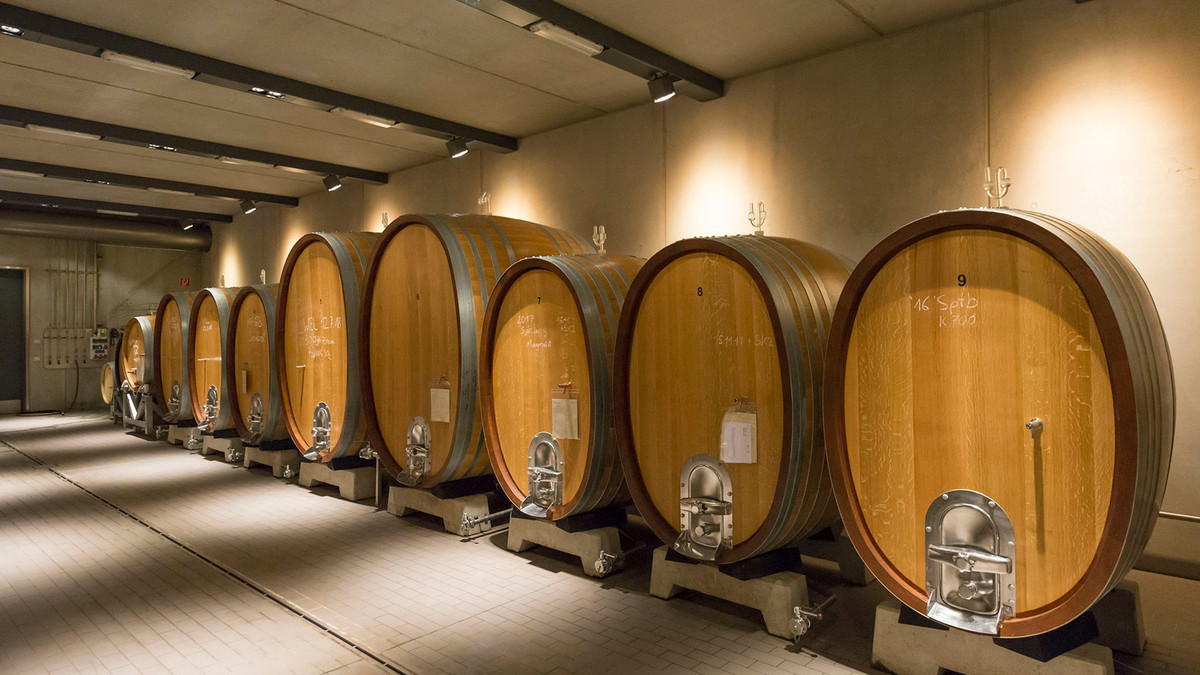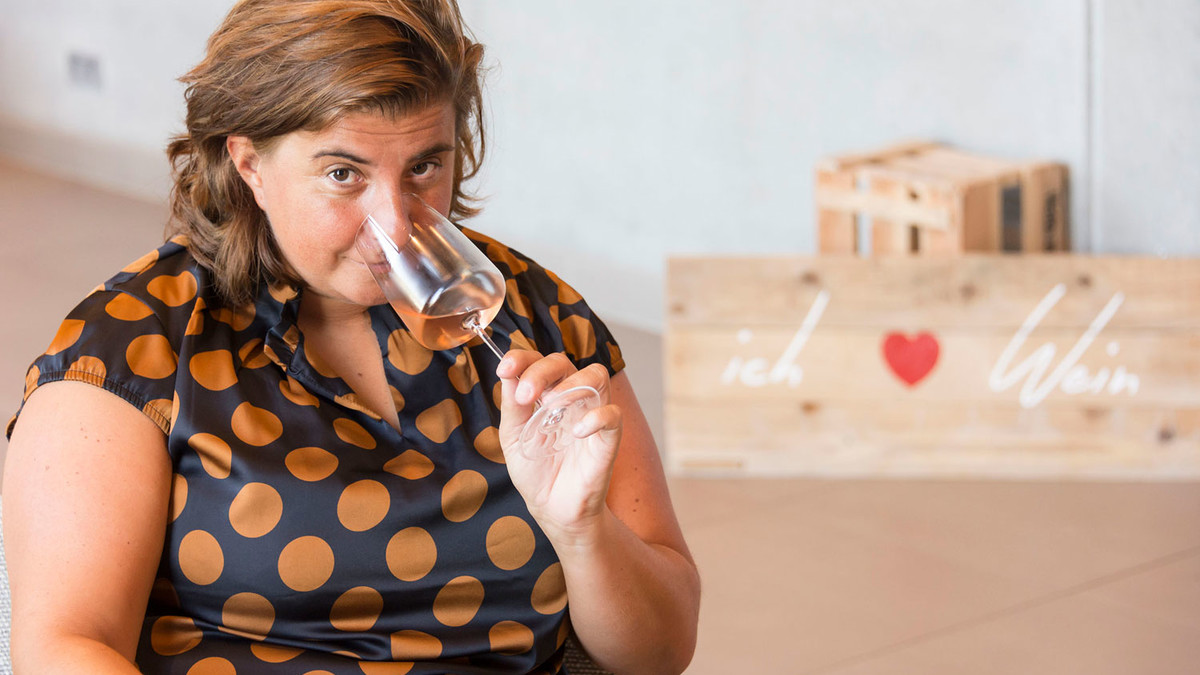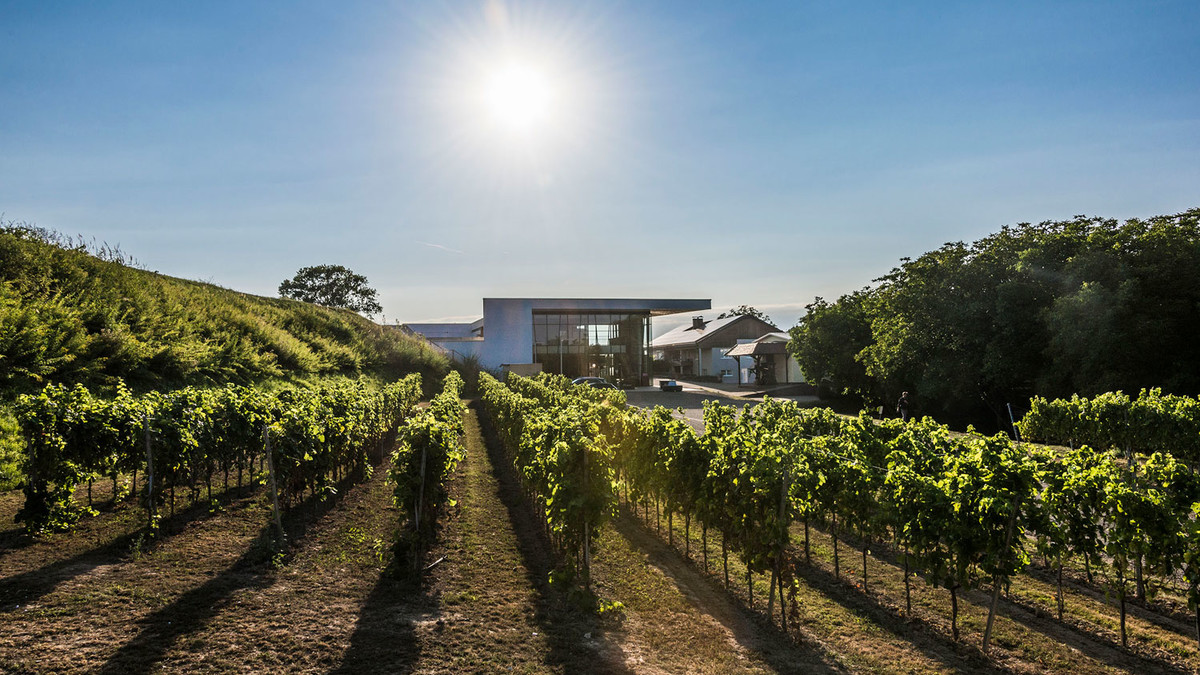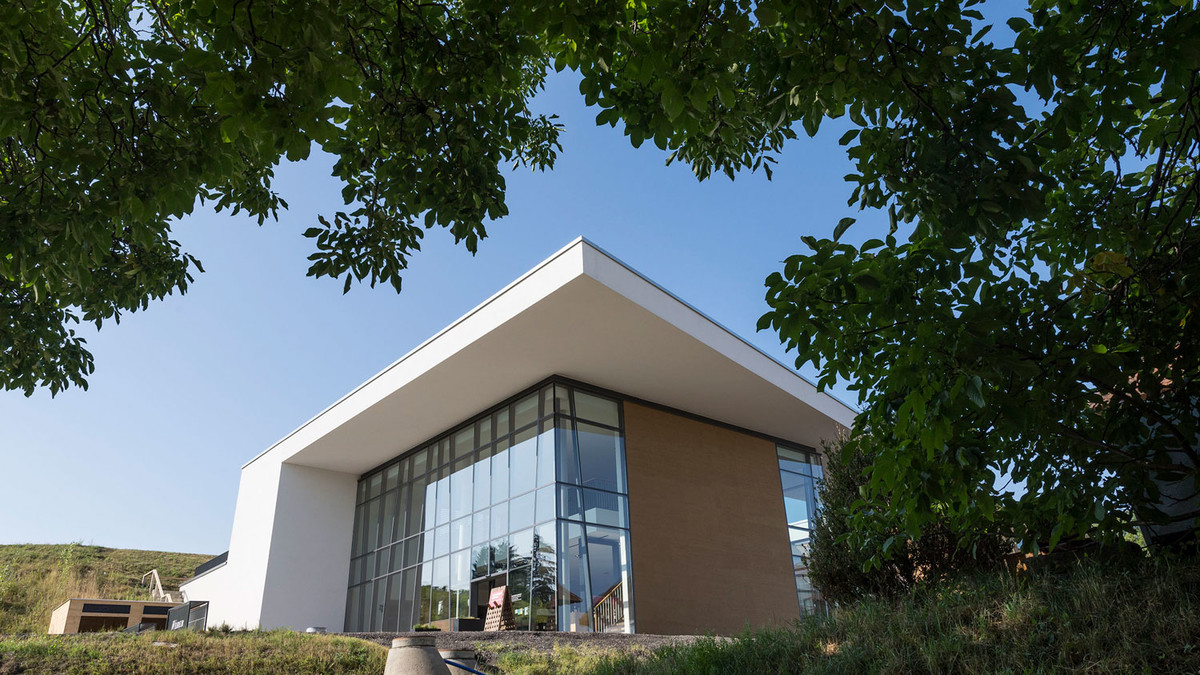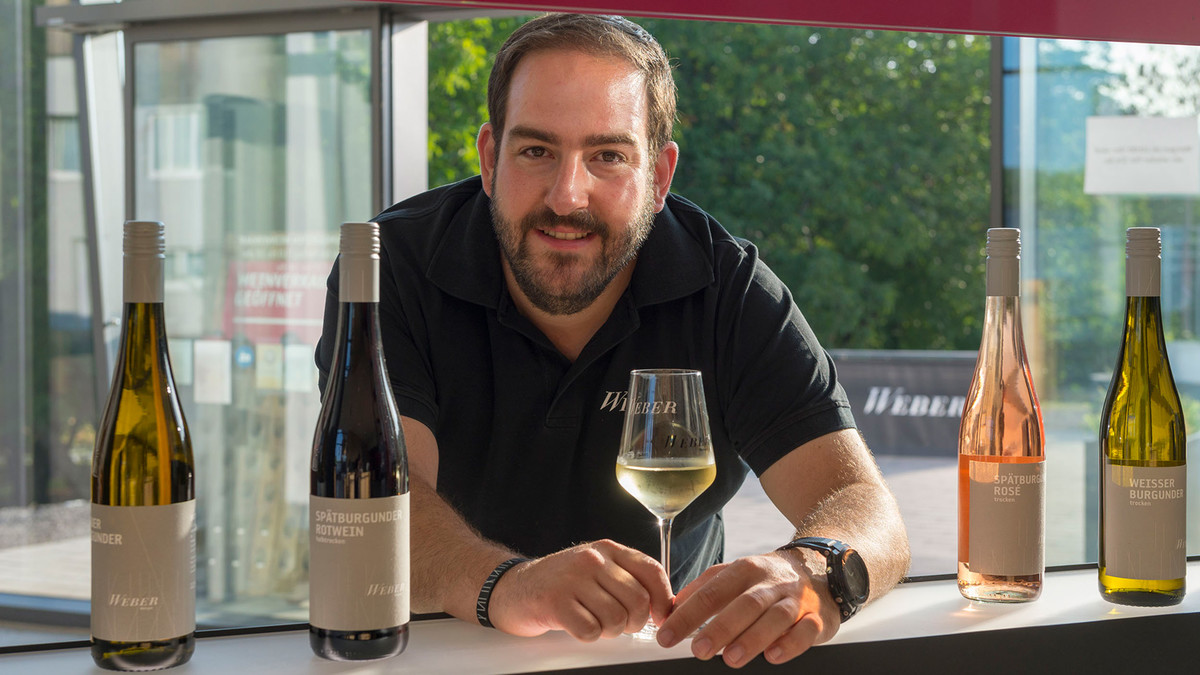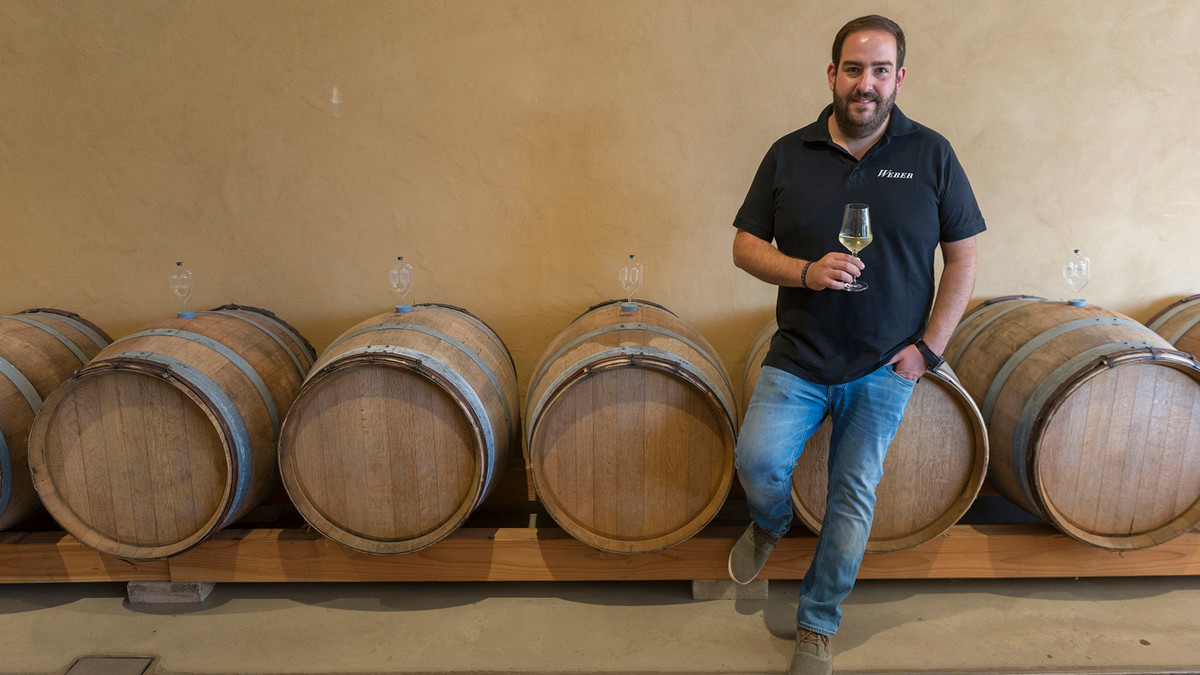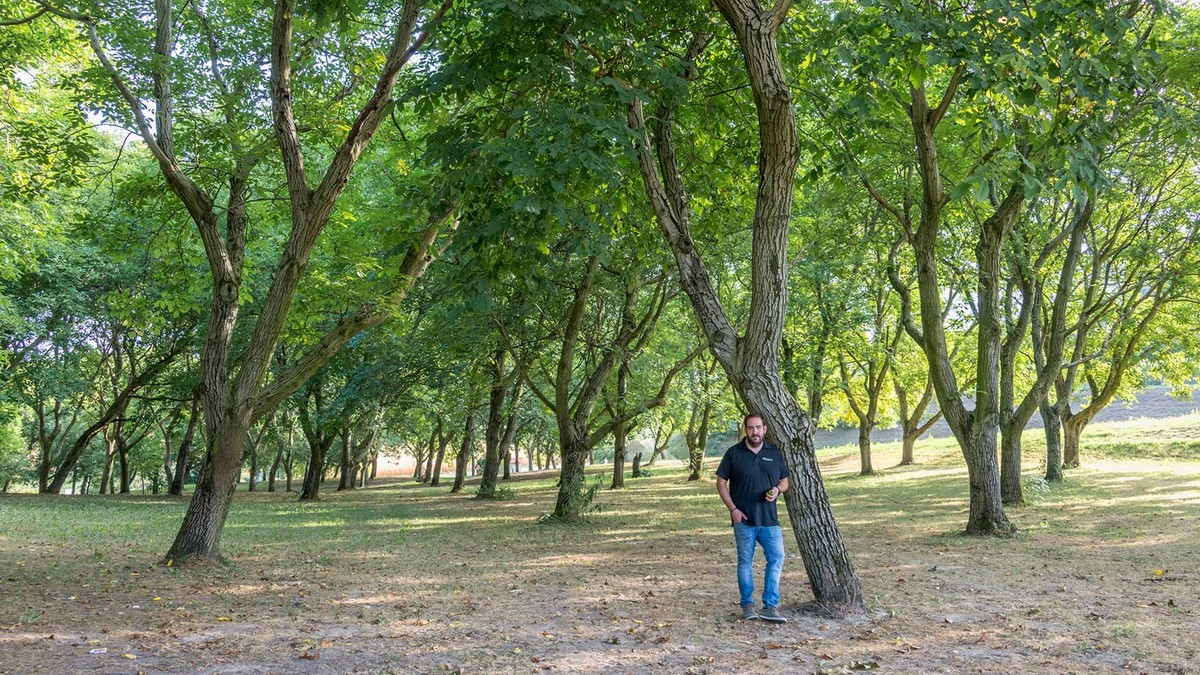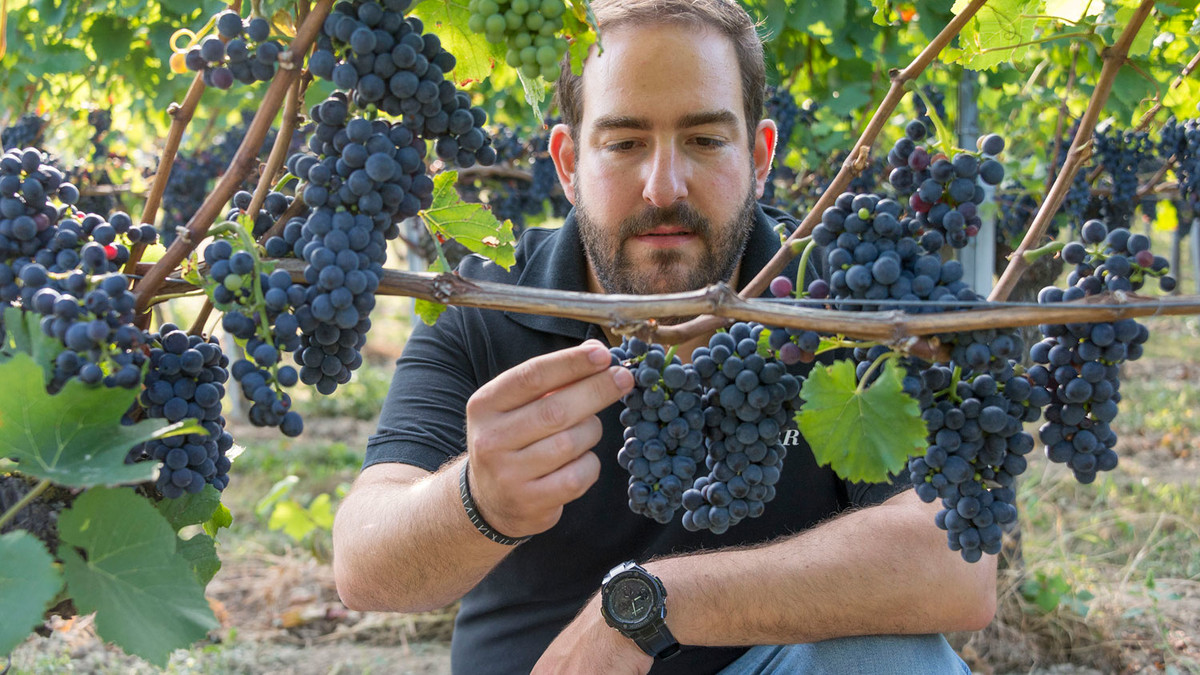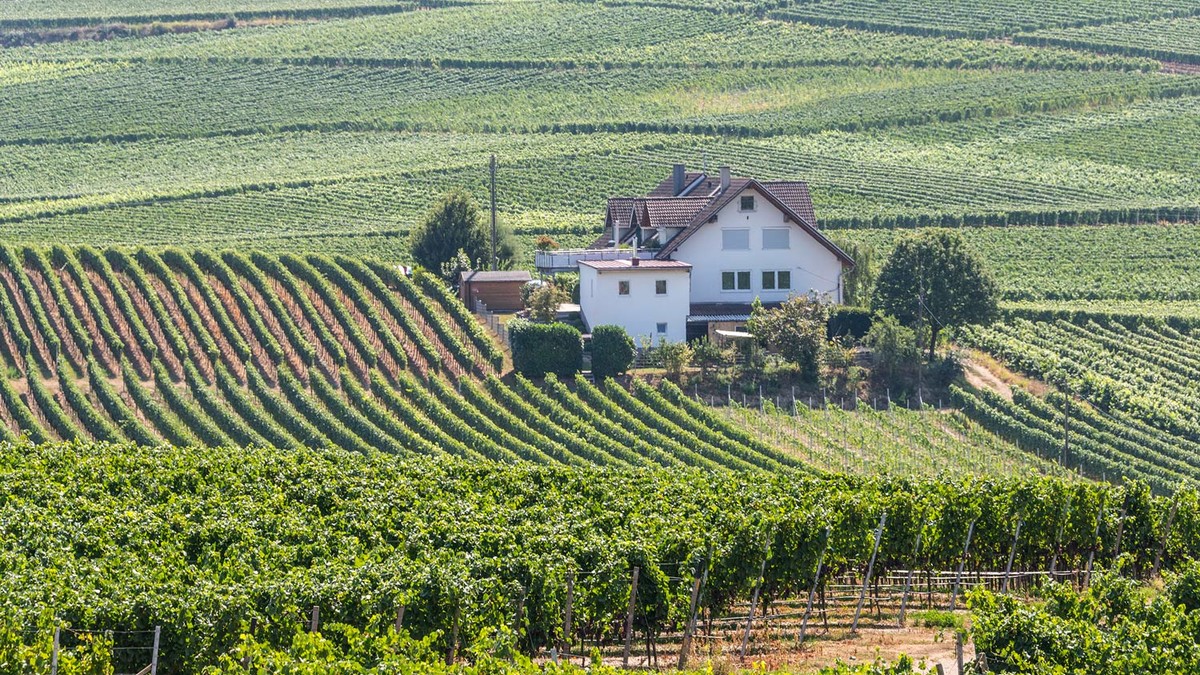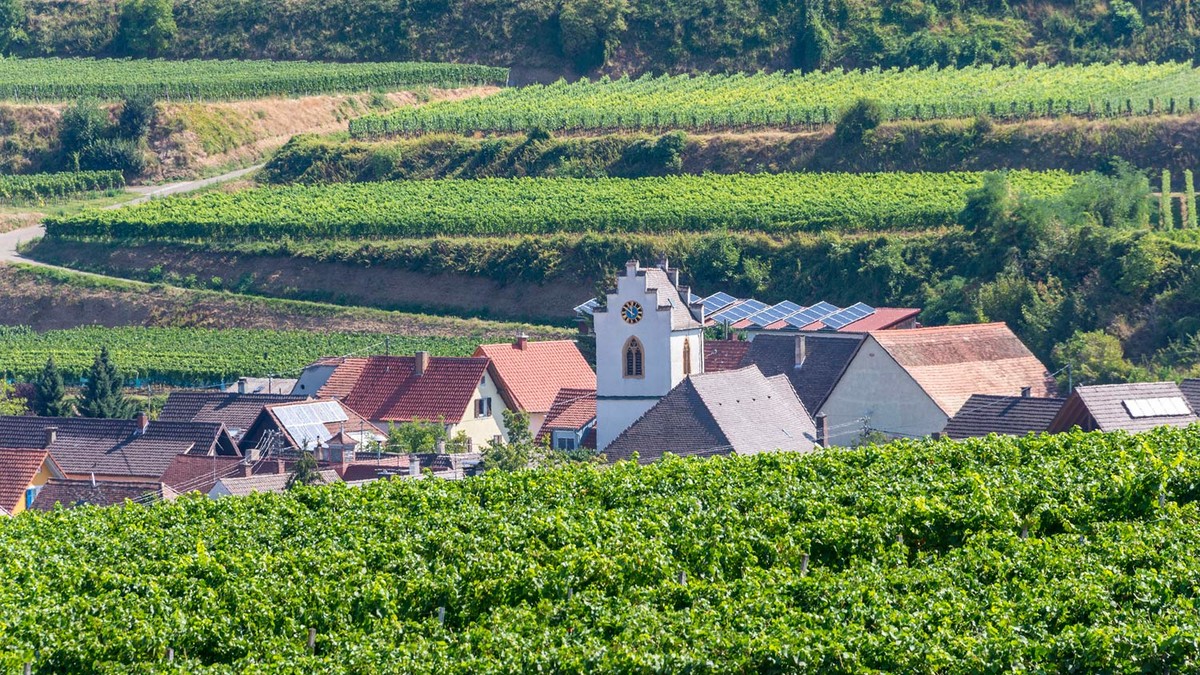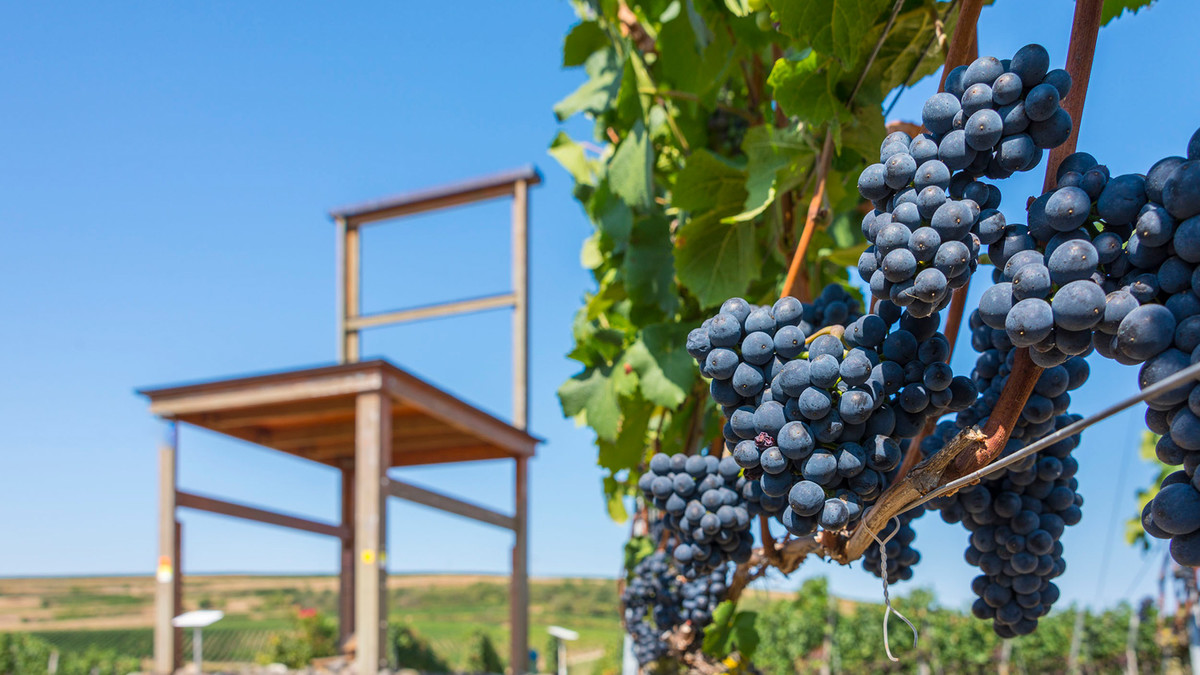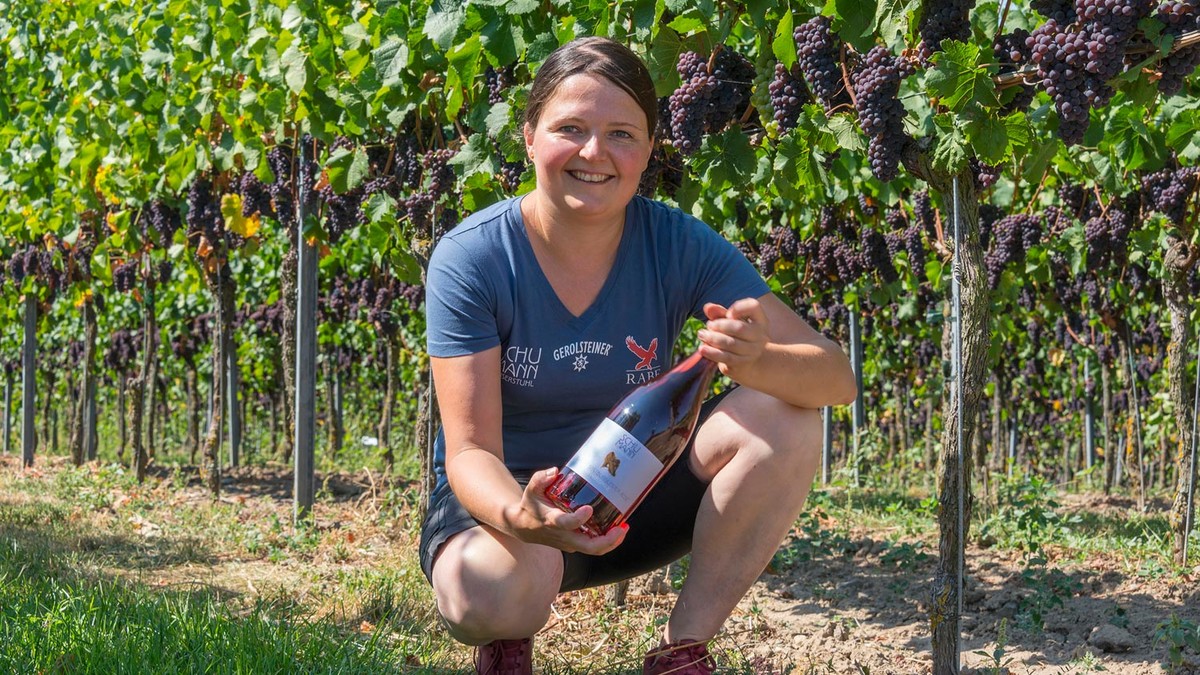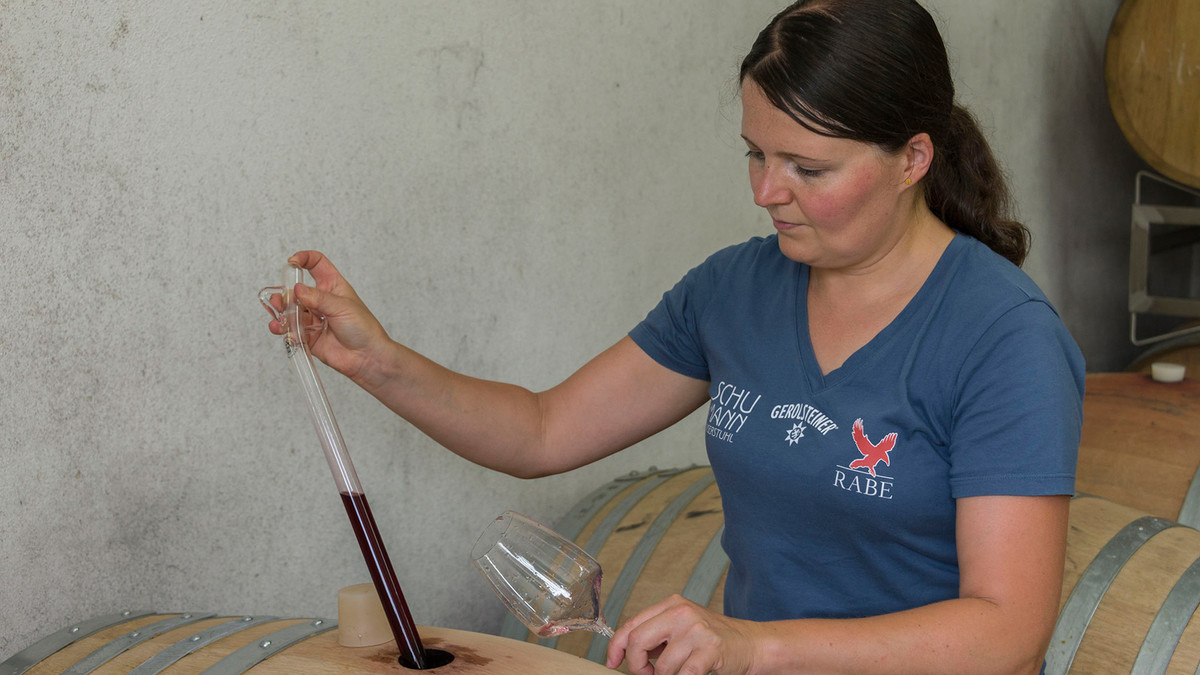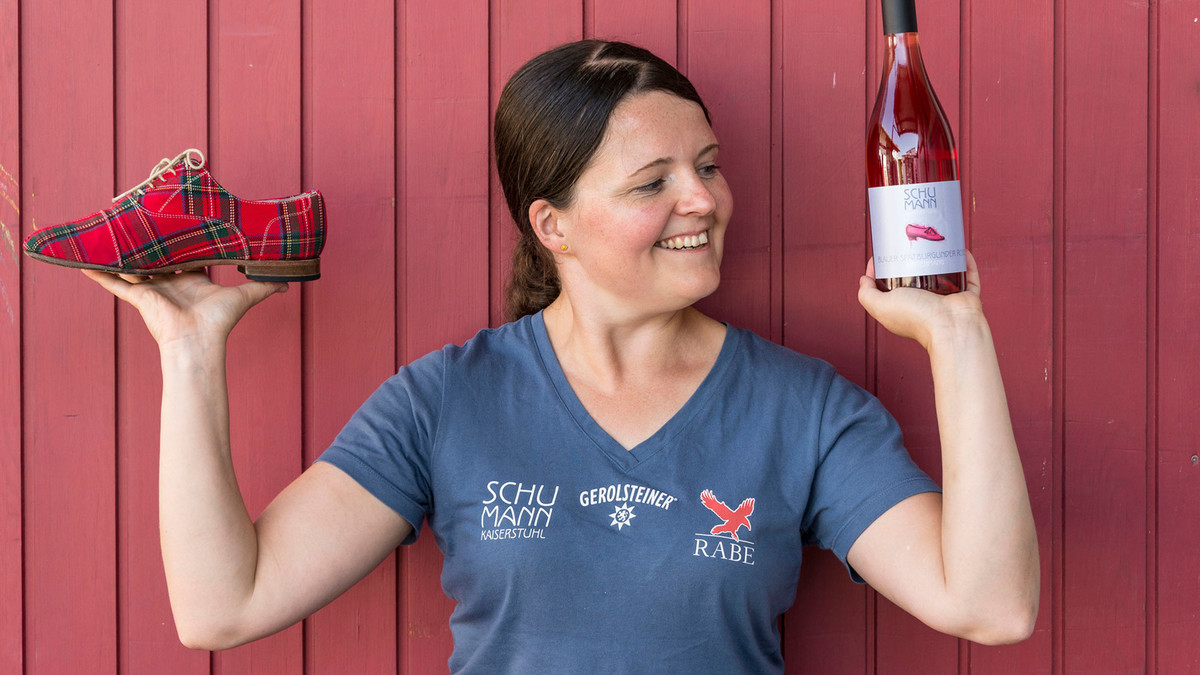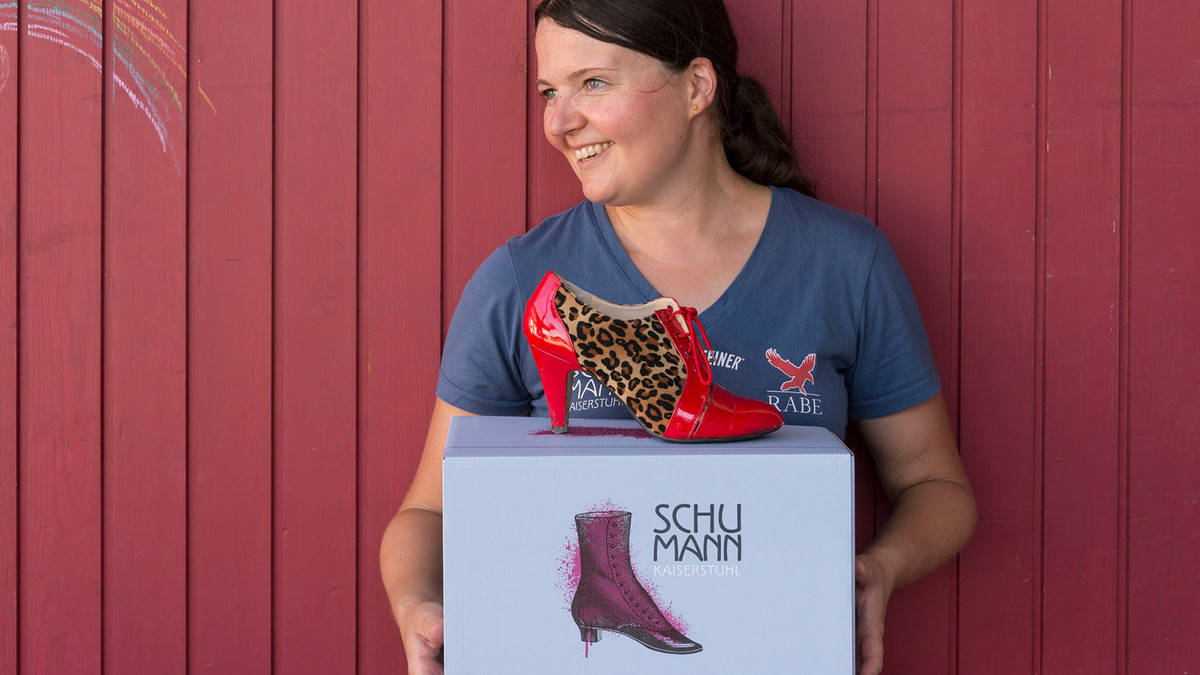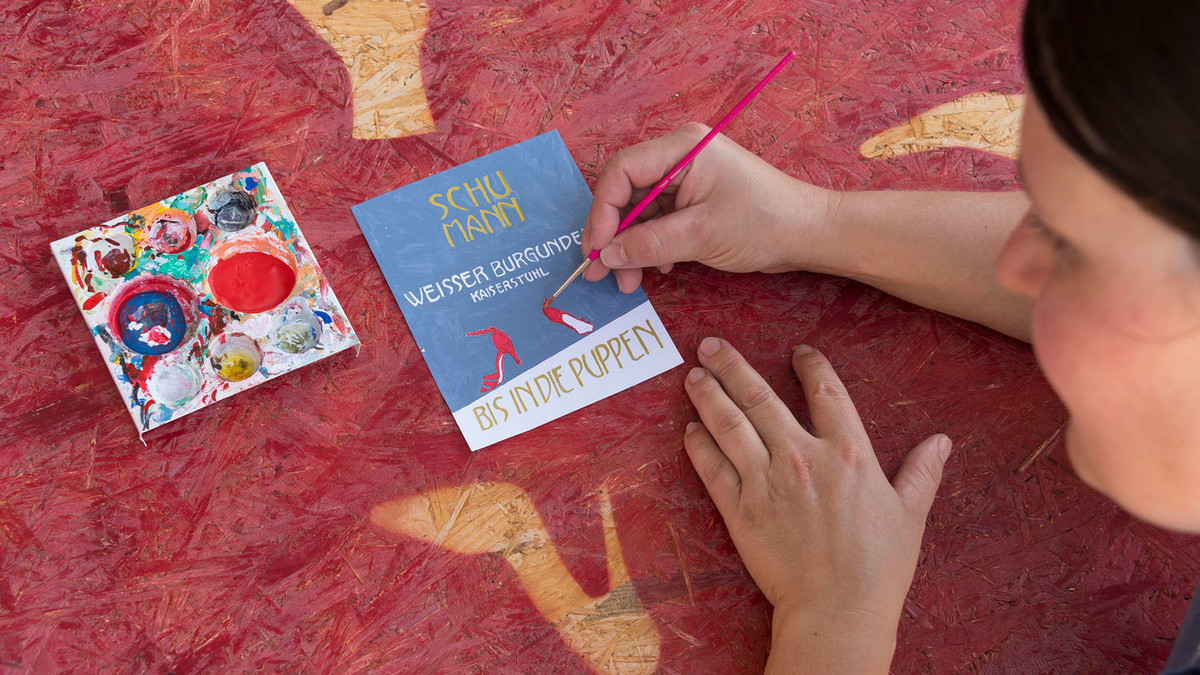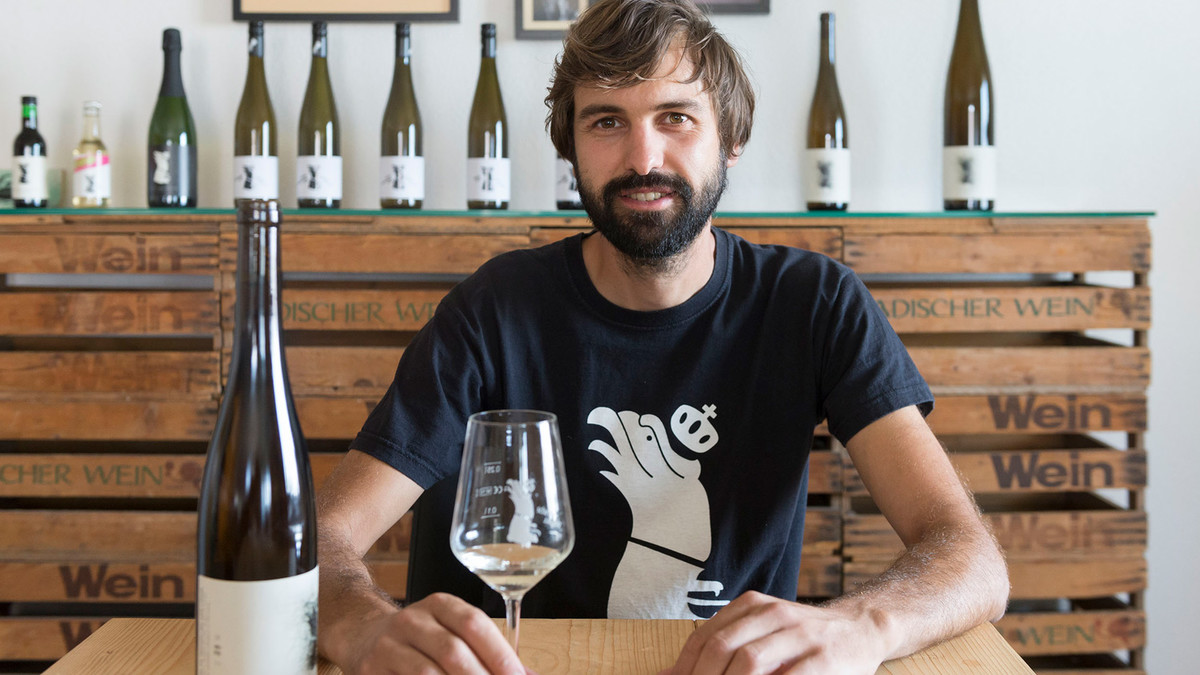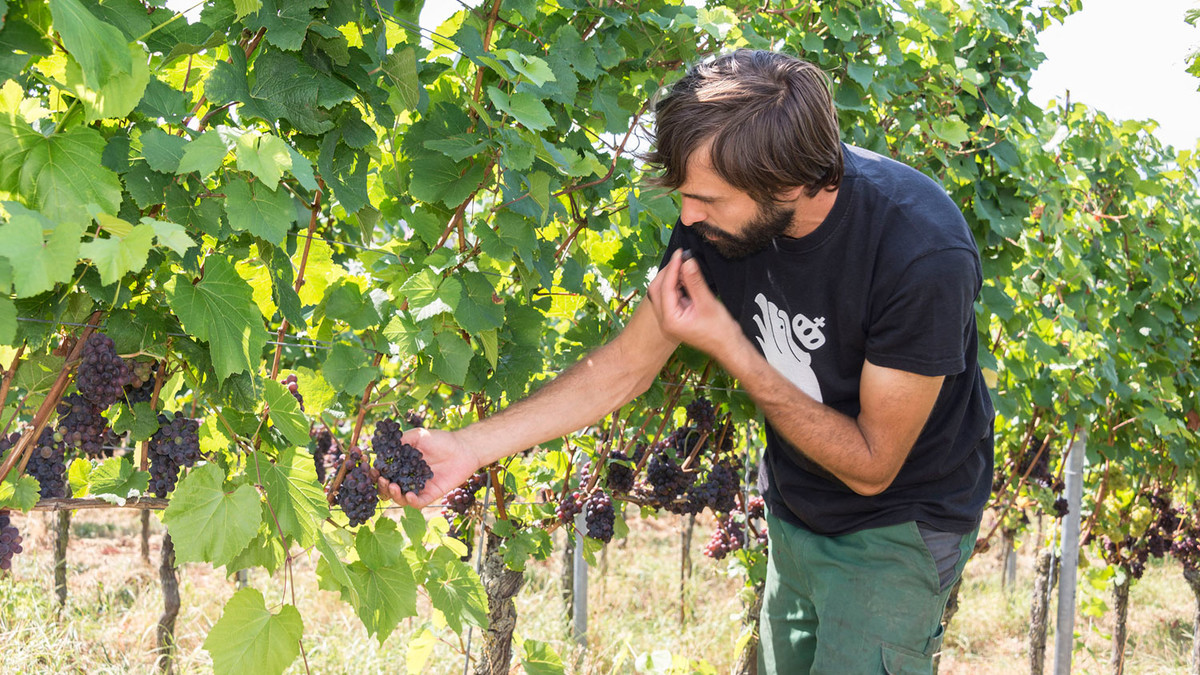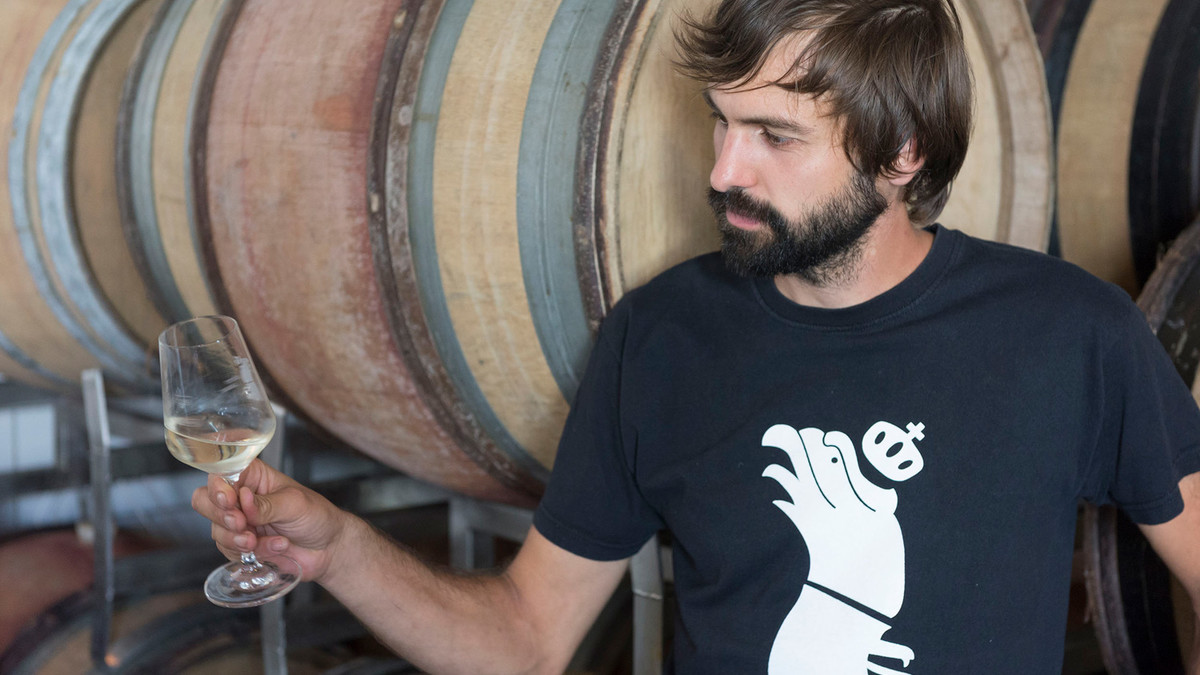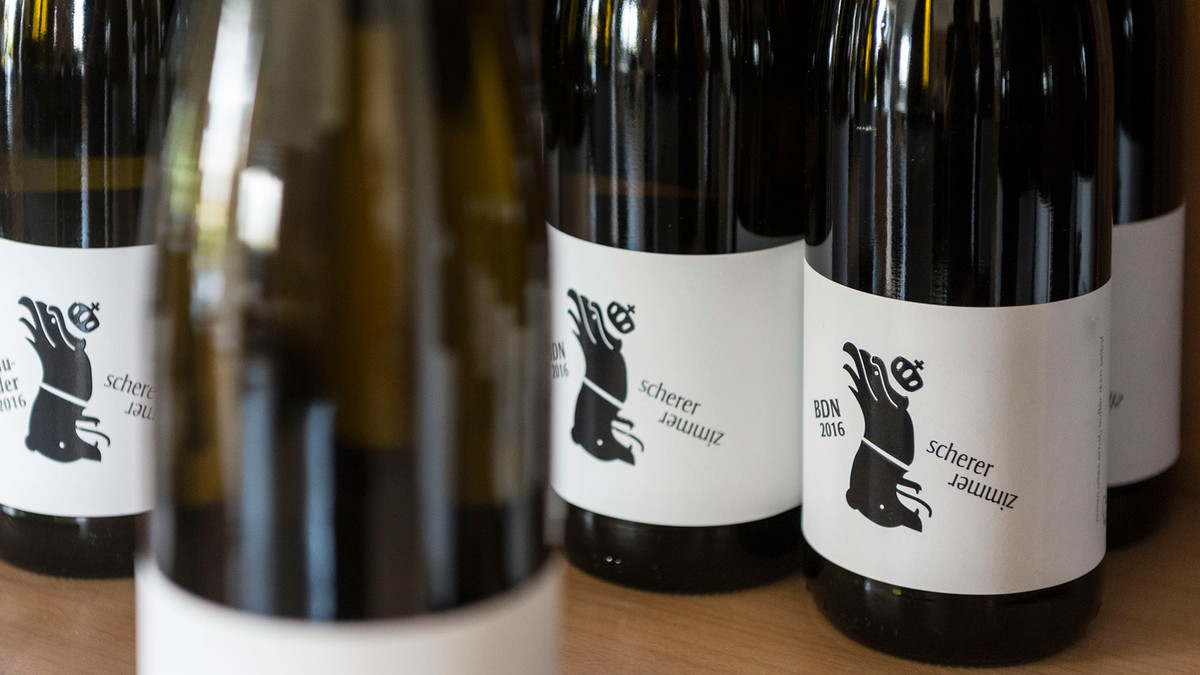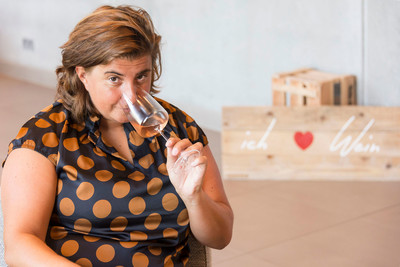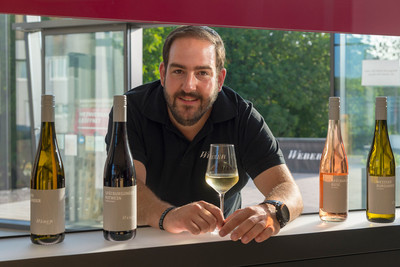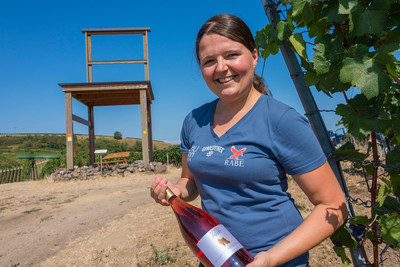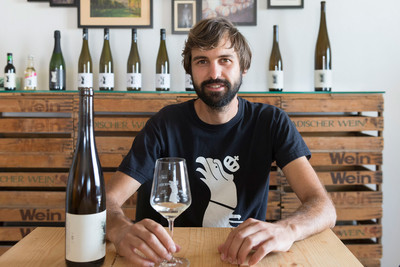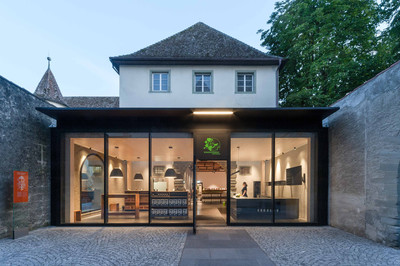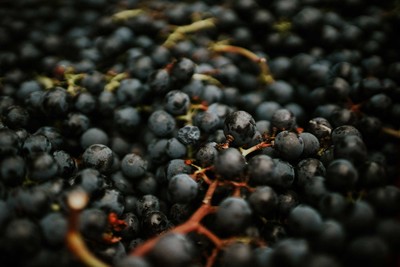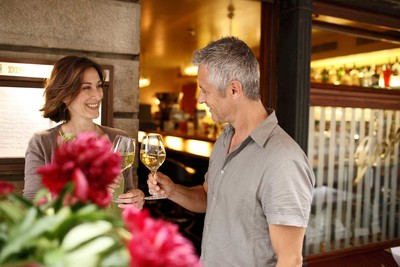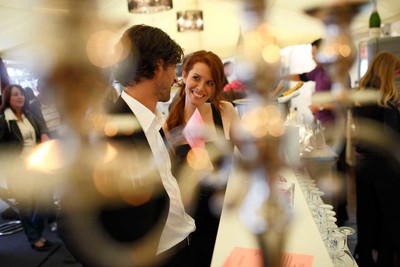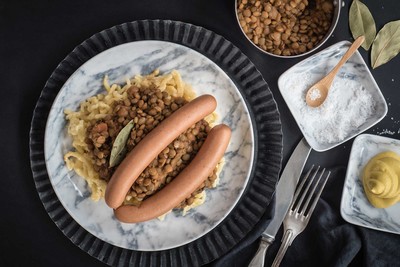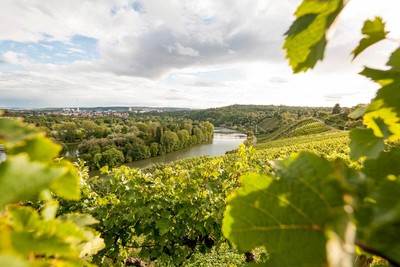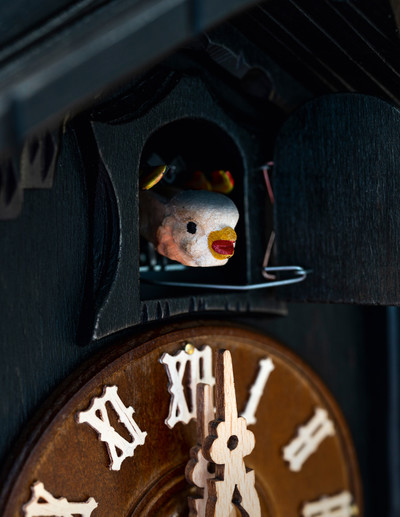Wine & Design
Baden's New Generation of Winemakers
© Udo Bernhart
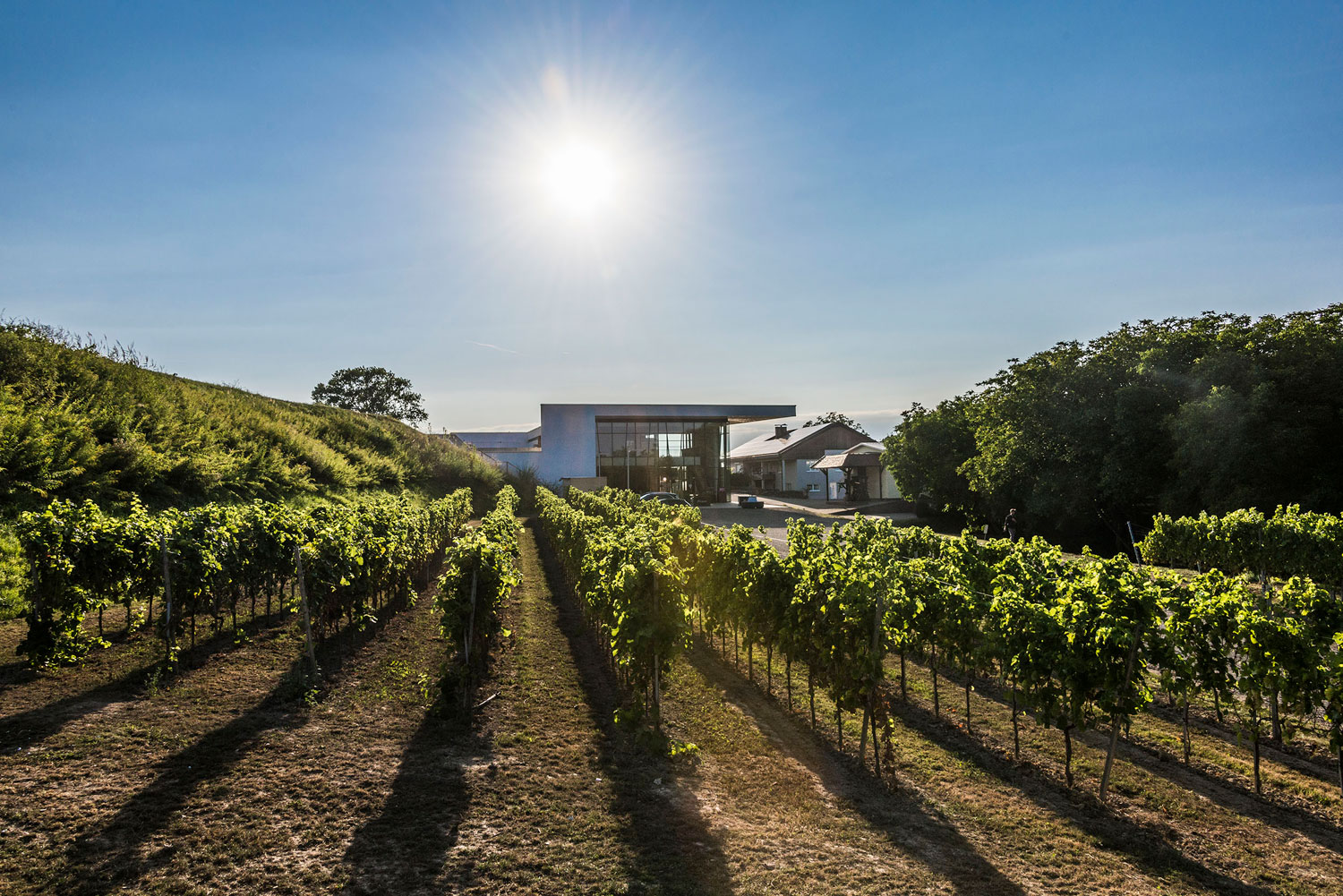

BW Story - Die Reiseschreiber
Young Winemakers and Their Innovative Approach to Modern Viticulture
For many winemakers in Baden-Württemberg, wine tasting has become a cultural activity. With contemporary buildings, cool bottle designs and lively events, a new generation of young winemakers kicks up a storm.
Winery with a stunning landscape
Weingut Abril in Vogtsburg
Behind the Weingut Abril, the Abril Winery, the vineyards and the surrounding hills rise up like an amphitheater. This beautiful landscape is the setting for an annual "pageant", the harvest. The vines are heavy with grapes; the first pickers are already at work on the highest slopes. Up there, on a clear day, the view to the west is spectacular: across the Rhine to Alsace in France and beyond to the Vosges Mountains. The winery sits high above the small town of Vogtsburg-Bischoffingen, half an hour's drive from Freiburg. Although the Abril winery has been around since 1740, it is very much up to date. In 2011, a new chapter in the company's history opened with a new builing, called the "Roschtkäschtle".
Inside, large windows bring natural light to the stylish lounge area, where visitors are welcome to taste and buy the top-quality organic wines. Even more importantly, this ultra-modern structure also boasts the latest cellar technology. "This is paradise for our head winemaker," says managing director Eva-Maria Köpfer. In the spirit of sustainability, deliveries arrive one floor above the cellar, so grapes, must and mash are moved by gravity alone. Pumps are only needed to fill the fermentation tanks, which saves electricity. At the same time, this gentle process ensures higher quality wines.
Here, in the southern Black Forest around Freiburg, there are probably more winemakers than in any other area of Germany. Grapes grow particularly well on the sun-drenched slopes of the Rhine Valley, especially varieties like Weissburgunder (Pinot Blanc) and Grauburgunder (Pinot Gris). But for winemakers to make it to the top, they have to do more than produce good wines: they also have to be "all-rounders," involved in everything from designing labels and bottles to creating new, architect-driven buildings on their estates.
From family-run vineyards to event venues
Weingut Weber in Ettenheim
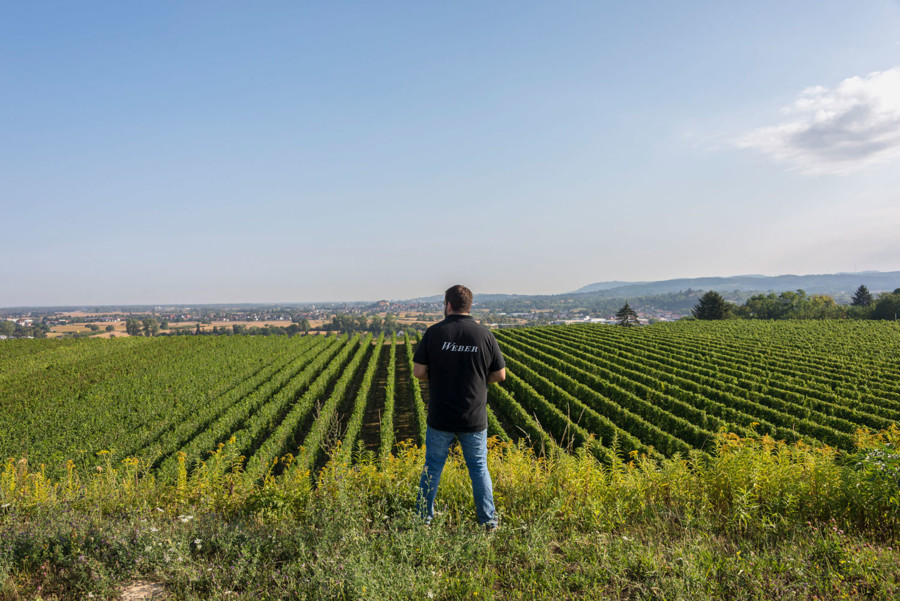
The road to Weingut Weber, the Weber family winery, winds past a walnut grove and continues to the top of a hill dominated by an imposing new building. Dating from 2013, it has huge glass windows and a flat roof. But two-thirds of it is virtually invisible, built into the side of the hill. This means that even in the middle of summer or the depths of winter, the temperature in the wine cellars remains constant. There is never any need for heating or cooling. A few years ago, Michael Weber took over as the fifth generation to run the winery. "The architecture of the building reflects our philosophy," he says. "Keep things simple, uncomplicated." After studying viticulture, Weber went to business school. That's how he came up with the idea of adding an event venue to the winery.
The elegant new building is regularly used for after-work get-togethers and the Webers' special white wine parties, where guest DJs spin the latest hits on warm summer evenings. Instead of shelves upon shelves of bottles, the wine shop displays just two dozen bottles. Set in special frames, they look almost like art installations. A contrast to all this modernity is the rustic restaurant next door. Run by Stefanie, Michael's sister, it is a modern take on tradition, with white tablecloths, comfort food, cushions on the banquettes, lots of wood and a warm welcome. Of course!
„A good wine should be fun“
– Michael Weber, Weingut Weber
Nothing like a traditional winemaking company
Weinhaus Schumann in Königschaffhausen
The first vintage at the winery in Königschaffhausen am Kaiserstuhl was in 2015. That was 27,000 bottles; now they produce almost 60,000 bottles a year. The grapes for the Burgundy-style wines come from the nearby Leiselheimer Gestühls winegrowers. The vineyard is known for its rosé wines: "Rosé has a reputation for being a fruity, sweet, sloppy wine. But if you make it right, you get a wine with structure and strength. Customers are amazed at how different our wines taste," says Bettina Schumann, who has quickly earned an excellent reputation among her fellow winemakers.
Yet her career path was not obvious. Growing up in Berlin, she discovered a passion for wine early on and began collecting wines as a teenager. Even then, she admits, her interest was less in the contents of the bottles than in the labels and packaging. At one point, Schumann wavered between studying art and doing an apprenticeship in winegrowing. In the end, she decided to study viticulture and enology. She then worked as a winemaker for many years before taking the bold step of running her own business.
In April 2018, she was joined by Melanie Panitzke, an award-winning sommelier at top restaurants. "A good wine doesn't have to be complex and expensive, with people sitting around analyzing it. Our wines should be for drinking and having fun," says Panitzke, explaining their winemaking philosophy.
Both women care not only about what the bottles contain, but also about how they look. Bettina now designs the fun labels and boxes herself. And the red lady's shoe label reflects her love of red shoes, as does her name: Schumann is German for shoemaker. Instead of identifying the wines by location, the labels have witty puns that are a mix of French and German. But she insists: "Wineries are also about tradition; you should never forget where your roots are." No wonder the wine from her start-up in the Kaiserstuhl region of Southwest Germany is on trend in Berlin's hip bars.
Organic wine growers with a passion for experimenting
Weingut Scherer & Zimmer in Bad Krozingen
The Schererhof is located on the outskirts of the spa town of Bad Krozingen. In what was once Felix Scherer's grandmother's pigsty, he and Michael Zimmer, who's originally from Berlin, make Burgundy style wines on about 25 acres/10 hectares. They use old oak barrels from Burgundy and also experiment with microorganisms and bacteria to keep the grapes healthy - the natural way.
Their labels feature a logo with two coats of arms: the Berlin Bear and the Baden Griffin. It not only refers to where the two men grew up, but also reflects tradition with a dash of cool. Otherwise, the minimalist label contains only the basic information: the name of the wine and the name of the grape variety. No frills, no bright colors. Scherer and Zimmer met at viticulture school and soon planned to open their own winery. They realized their dream in 2010. Instead of going high-tech, the young winemakers focus on quality, simplicity and respect for nature: "In the beginning we improvised a lot. This has become a credo. If I have high-quality grapes, I do not have to do much with them," says Scherer.
Winemakers such as Felix Scherer, Michael Zimmer, and Bettina Schumann, are part of a new generation of winemakers who have organized themselves into the "Generation Pinot" association. Their goal is to make Baden wines internationally successful.
Generation Pinot
To put their wines in the spotlight, 54 young Baden winegrowers created Generation Pinot. This group shares know-how on new cultivation and cellaring techniques. And to make their wines from Baden better known, they have adopted the internationally-recognised name for their grape variety: Pinot.
More on Generation Pinot: generation-pinot.de
More info on Wine & Design in the Black Forest: badische-weinstrasse.de/geniessen-erleben/wein-design

